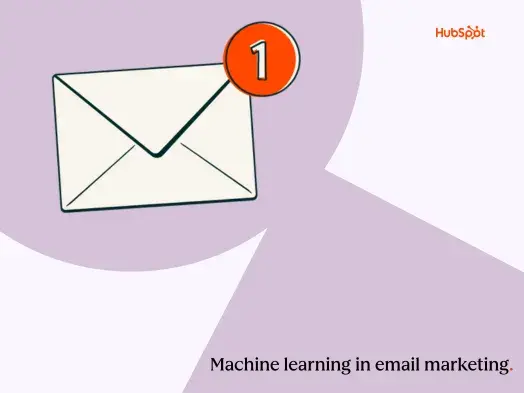Machine Learning in Email Marketing: What Actually Drives Revenue

▼ Summary
– Machine learning in email marketing uses algorithms to personalize content, optimize send times, and predict customer behavior to increase engagement and revenue.
– Effective ML applications require clean, unified data and clear success metrics, as poor data quality or vague goals can lead to failure.
– Key use cases include dynamic personalization, send-time optimization, predictive lead scoring, and AI-assisted copy testing for improved performance.
– Measuring ROI involves tracking business outcomes like revenue and conversion rates, not just email metrics, and using holdout tests to isolate ML impact.
– Successful implementation requires a phased approach with data preparation, human oversight for brand consistency, and ongoing model monitoring to avoid common pitfalls.
Machine learning transforms email marketing by moving beyond generic campaigns to deliver personalized experiences that drive measurable revenue growth. This technology uses algorithms to analyze customer behavior and predict individual preferences, enabling marketers to send the right message to the right person at the optimal time. While the potential is significant, success depends on implementing the right strategies with clean data and clear business objectives.
Understanding how machine learning enhances email marketing begins with recognizing its predictive capabilities. Unlike traditional rules-based automation that follows preset conditions, machine learning algorithms continuously learn from new data to identify patterns humans might miss. This allows for dynamic adjustments to content, timing, and targeting that improve over time. The distinction from artificial intelligence is important: machine learning focuses specifically on pattern recognition and prediction within defined parameters, rather than attempting broader cognitive tasks.
Several applications consistently deliver strong results for marketers adopting this technology. Personalization at scale enables dynamic content selection based on individual recipient profiles and behaviors. Send-time optimization predicts when each contact is most likely to engage with messages. Predictive scoring identifies which leads are ready to purchase or at risk of churning. Accelerated testing quickly surfaces winning subject lines and copy variations, while recommendation engines match products or content to individual preferences.
However, machine learning has limitations that require attention. The quality of your input data directly determines the quality of predictions – incomplete or messy data produces unreliable results. These tools work best when supporting a clear marketing strategy rather than replacing strategic thinking. Most models need substantial data volumes to learn effectively, typically hundreds or thousands of examples per segment. While machine learning can suggest and test content, it cannot replicate human judgment for brand-sensitive copy. Perhaps most importantly, without proper measurement against established baselines, you cannot determine whether the technology is delivering value.
Proper preparation separates successful implementations from disappointing experiments. Begin by unifying contact data across all systems into a single source of truth. Machine learning models require complete customer profiles that include identity resolution, lifecycle stages, and behavioral events on a shared timeline. Consolidating contacts and mapping key activities to lifecycle stages provides the context models need for accurate predictions.
Data quality automation is equally critical. Implement workflows to deduplicate contacts, standardize field formatting, enrich missing information, and maintain current consent flags. Manual cleanup provides only temporary relief, while automated quality checks ensure new records arrive clean and existing data remains accurate. Audit your event tracking to capture the behaviors that matter most to your business, from email engagement to purchases and content downloads. Each event should carry sufficient context to inform personalization decisions.
Before activating any machine learning features, establish baseline performance metrics. Document current open rates, click-through rates, conversion rates, revenue per email, and unsubscribe rates by segment and campaign type. Running holdout tests that compare treatment groups receiving ML-enhanced campaigns against control groups provides the clearest picture of the technology’s impact, isolating its effects from seasonal variations or external factors.
Among the most proven applications, AI email personalization selects content blocks, images, and calls-to-action for each recipient based on their profile and behavior. This approach works particularly well for high-volume campaigns with diverse audiences, provided you have sufficient historical engagement data. The common mistake to avoid involves personalizing cosmetic details rather than elements that genuinely influence decision-making, such as relevant offers or product recommendations.
Send-time optimization represents another high-impact use case. Instead of blasting emails at predetermined times, these models predict when each contact is most likely to open and engage, then schedule delivery accordingly. This approach typically increases open rates by 5-15% rather than delivering transformational results, making it most effective when combined with strong subject lines and relevant content.
Predictive lead scoring analyzes hundreds of attributes to assign conversion likelihood scores to each contact. This works exceptionally well for B2B companies with defined sales funnels and enough historical deal data to train the model. Regular validation against actual outcomes is essential, as models can develop biases based on outdated assumptions that no longer correlate with conversion.
For subject line and copy optimization, machine learning accelerates multivariate testing by analyzing thousands of past examples to identify patterns that drive engagement. The key is using AI-generated copy as a starting point rather than a final product, maintaining human oversight for brand voice and strategic alignment. Dynamic recommendations excel for businesses with substantial product catalogs or content libraries, though they should exclude items contacts have already purchased or consumed.
Measuring return on investment requires looking beyond vanity metrics to business outcomes. Shift focus from open and click rates to revenue per email, conversion rates, customer acquisition cost, and lifetime value. Implement multi-touch attribution to understand how email contributes throughout the customer journey, particularly when machine learning influences multiple touchpoints.
Efficiency gains and cost savings represent another dimension of ROI. Track hours saved on manual segmentation, list pulls, and test setup, along with changes in cost per lead and campaign launch velocity. Monitor unintended consequences like rising unsubscribe rates or brand consistency issues, establishing dashboards that track both positive metrics and potential negative indicators.
Implementation approaches should match team size and resources. Small teams can begin with send-time optimization and AI-assisted subject line generation, then gradually introduce dynamic content personalization and predictive scoring. Mid-market organizations might start with predictive scoring integrated into email workflows, then expand to dynamic recommendations and broader AI copy testing. Enterprise teams should establish data governance frameworks and cross-functional councils before scaling advanced personalization across all email programs.
Common pitfalls include launching without proper baselines, over-automating brand voice, ignoring control groups, chasing engagement metrics without conversion tracking, overusing winning patterns until they lose effectiveness, and assuming models will work indefinitely without ongoing measurement. Each has straightforward solutions: clean data before enabling features, require human review of AI-generated copy, run controlled experiments, optimize for business outcomes, rotate winning creative, and conduct regular performance reviews.
Frequently asked questions reveal practical considerations. You don’t need a data scientist to begin using platform-embedded machine learning features, though expertise becomes valuable for custom models or advanced experimentation. Data should meet pragmatic quality thresholds rather than perfection, with priorities on deduplication, identity resolution, and consent management. Results appear at different timeframes depending on the use case, from quick wins with send-time optimization to compounding gains from recommendation engines over several months.
Governance structures should include defined roles for configuration, content review, data stewardship, and executive sponsorship. Regular rituals might include weekly performance checks, bi-weekly campaign reviews, monthly governance meetings, and quarterly strategy sessions. Establish guardrails such as approval gates for high-stakes campaigns, rollback procedures for underperforming models, and bias audits to ensure fair treatment across customer segments.
The future of machine learning in email marketing points toward deeper integration across data sources and more sophisticated prediction of customer needs. The foundation remains constant: unify your data, begin with proven applications, measure results rigorously, and maintain thoughtful governance. When implemented strategically, machine learning becomes not just another marketing tactic but fundamental infrastructure that delivers compounding advantages over time.
(Source: HubSpot Marketing Blog)





One Comment